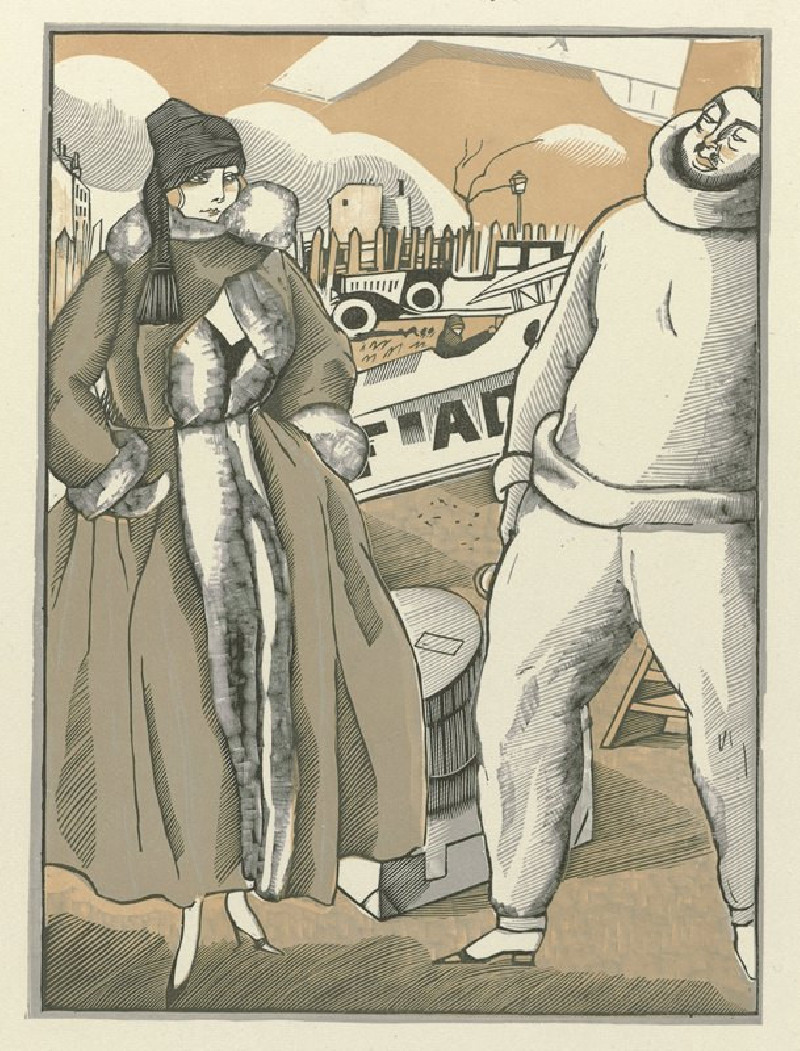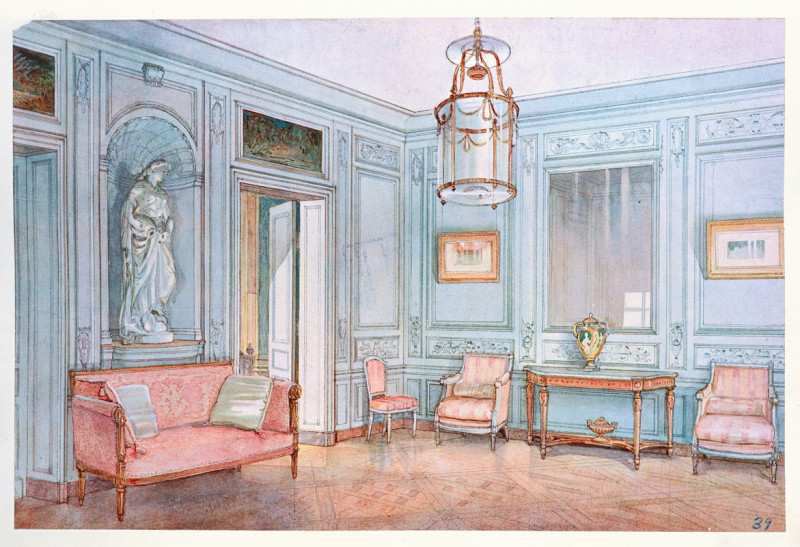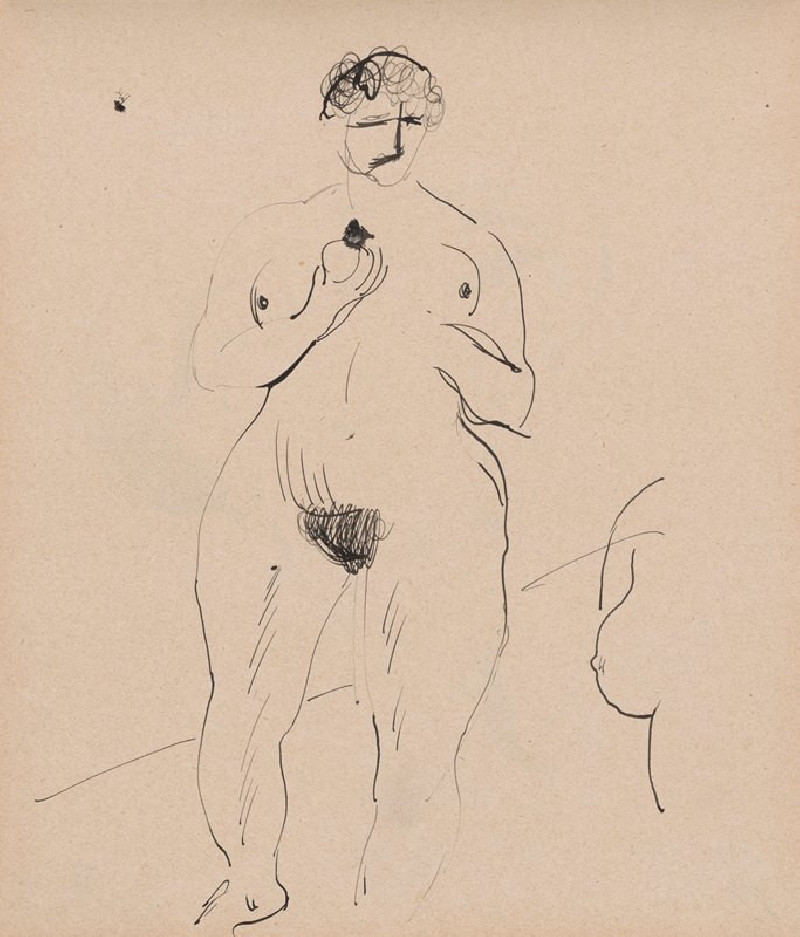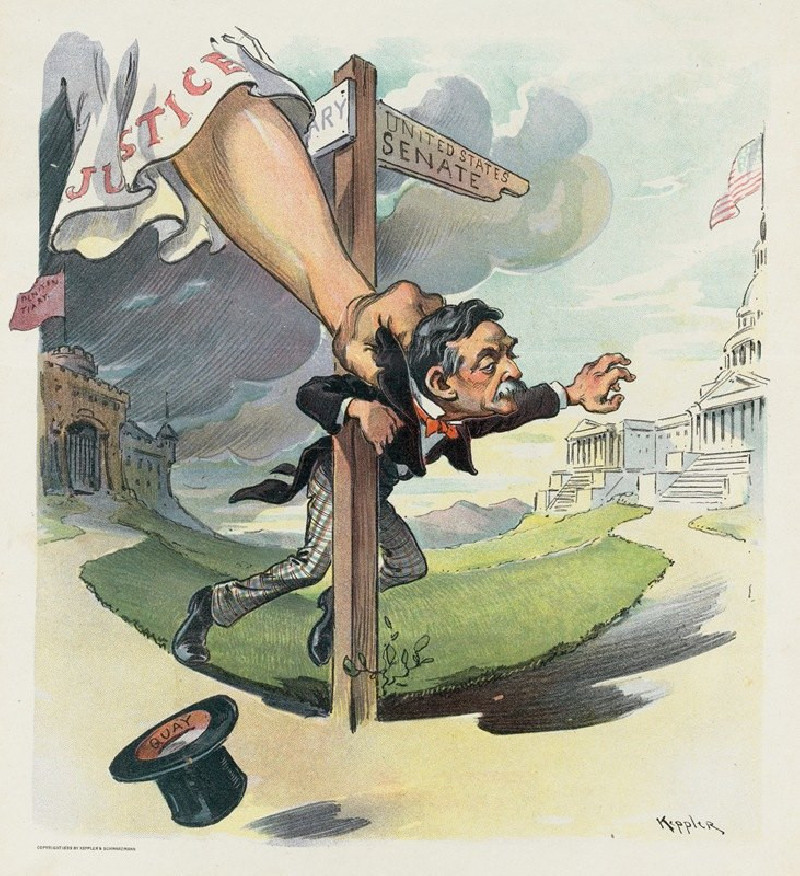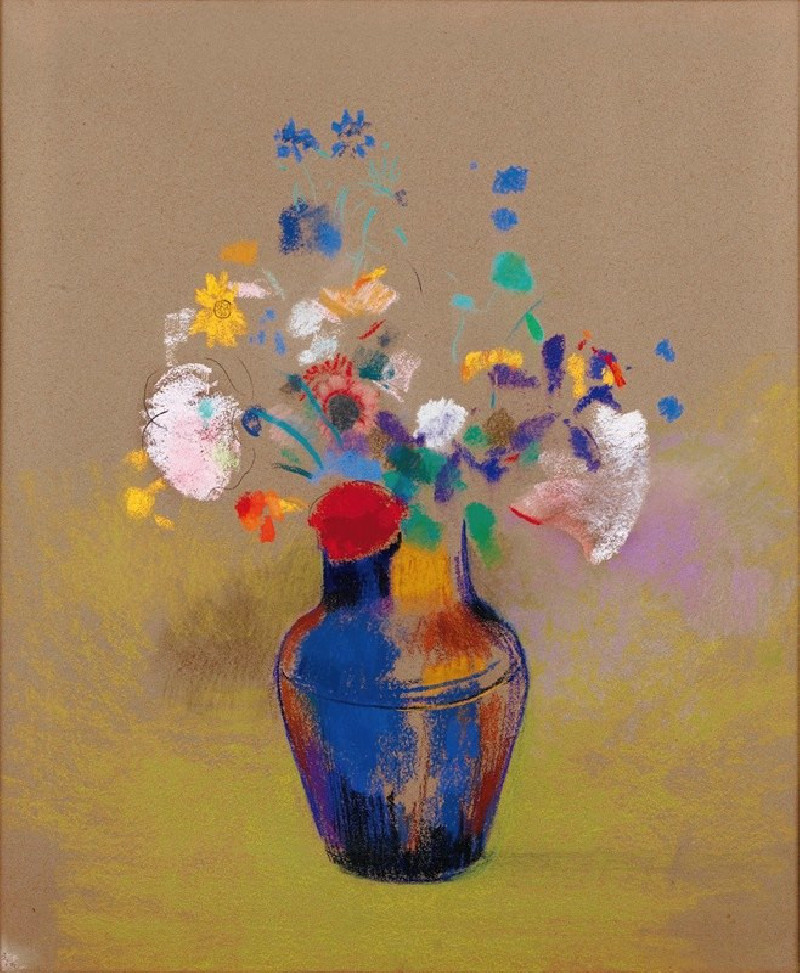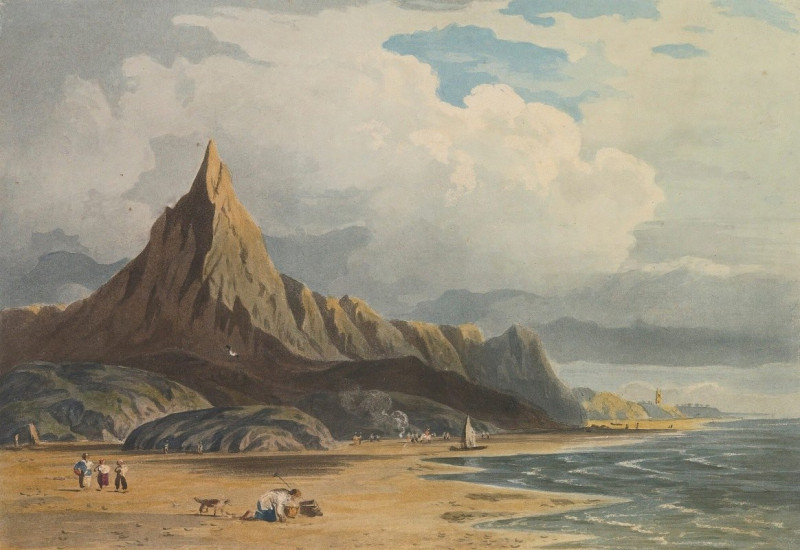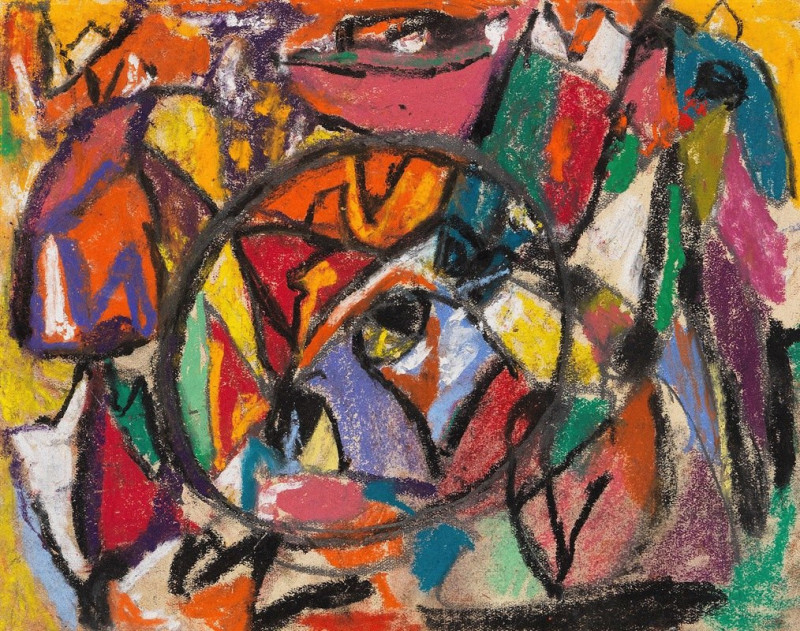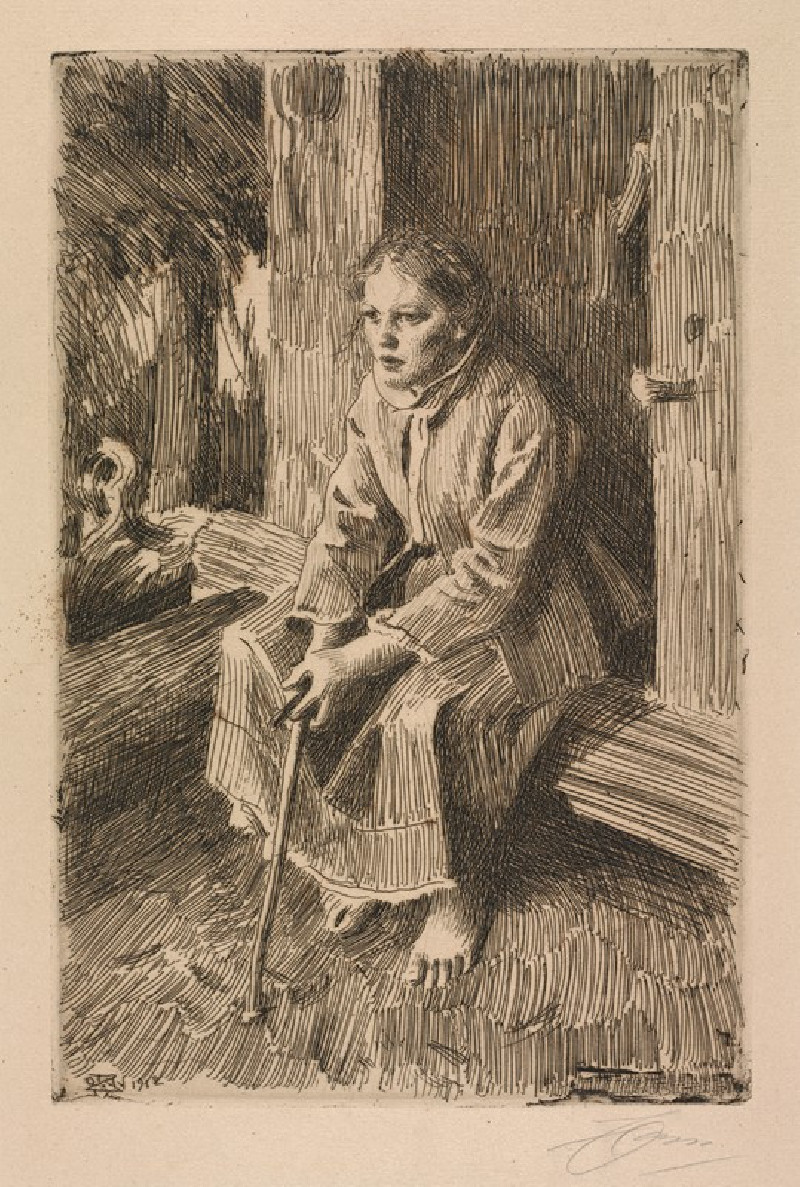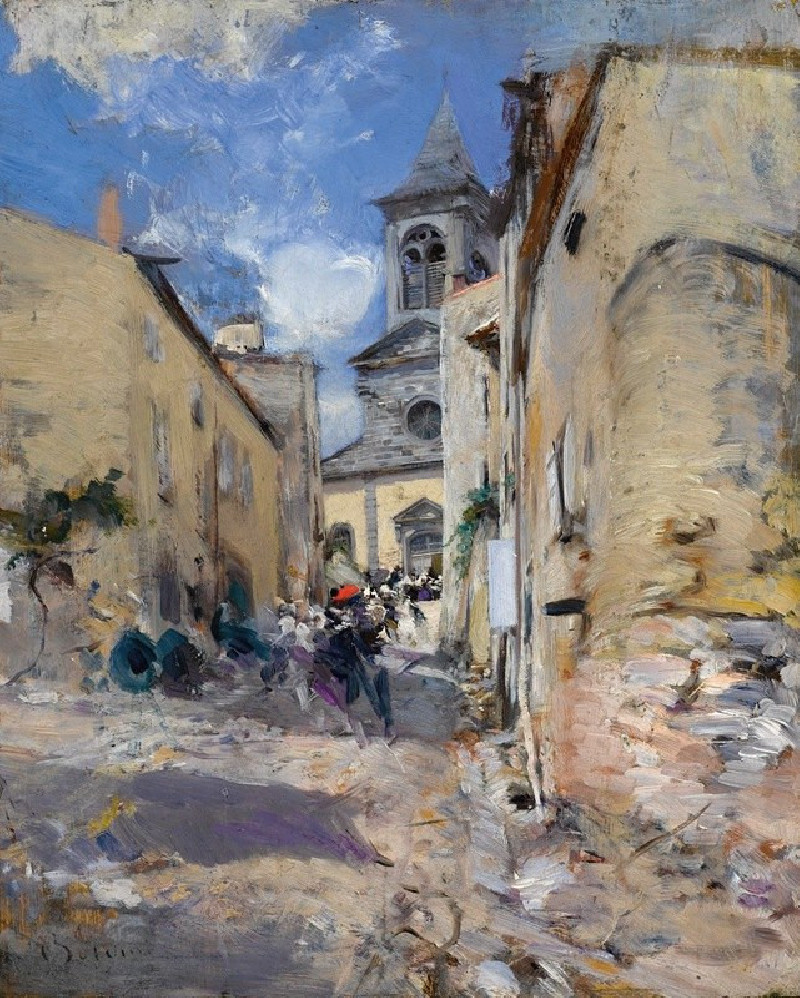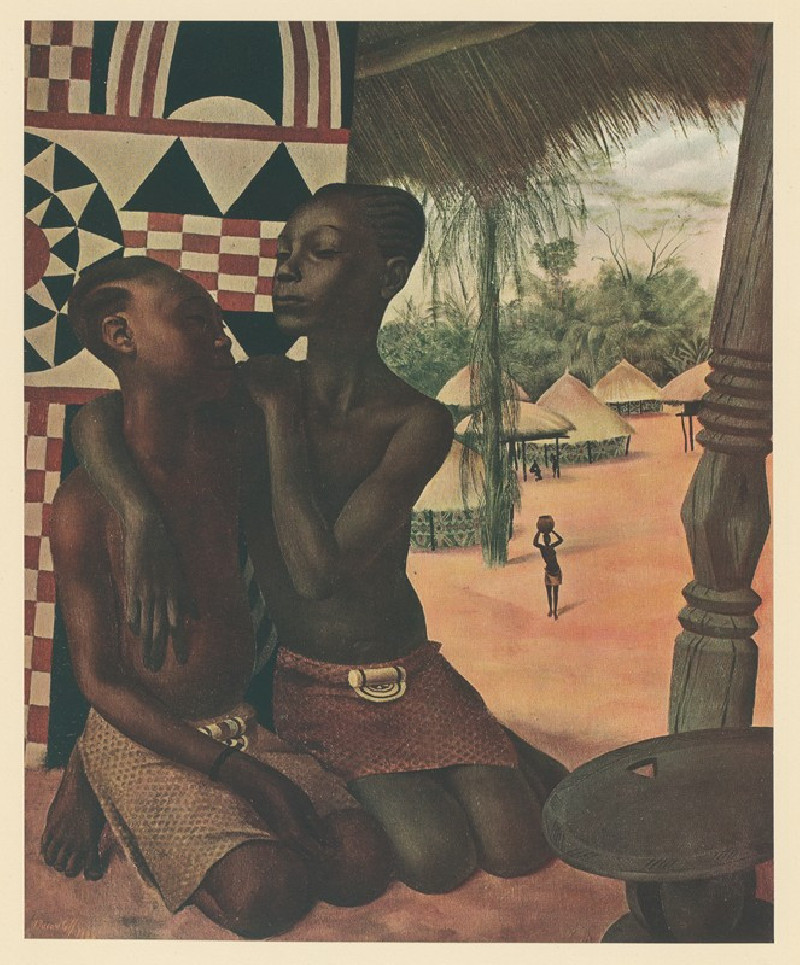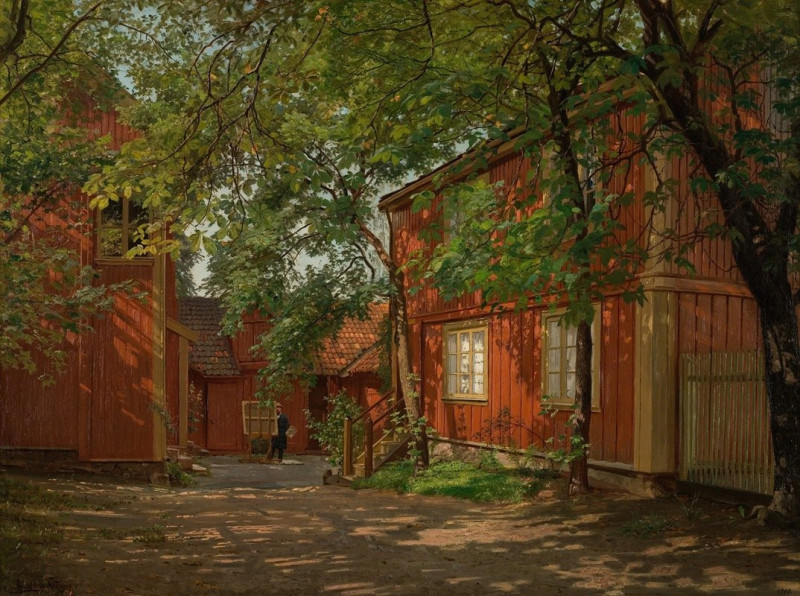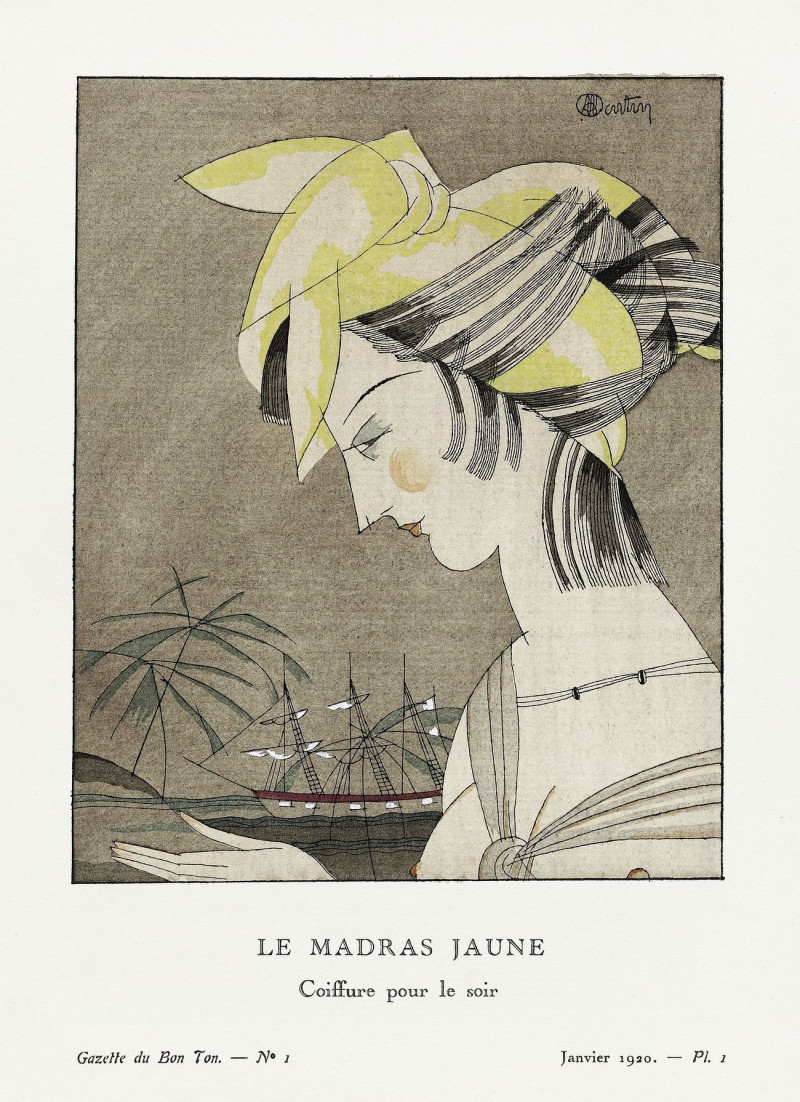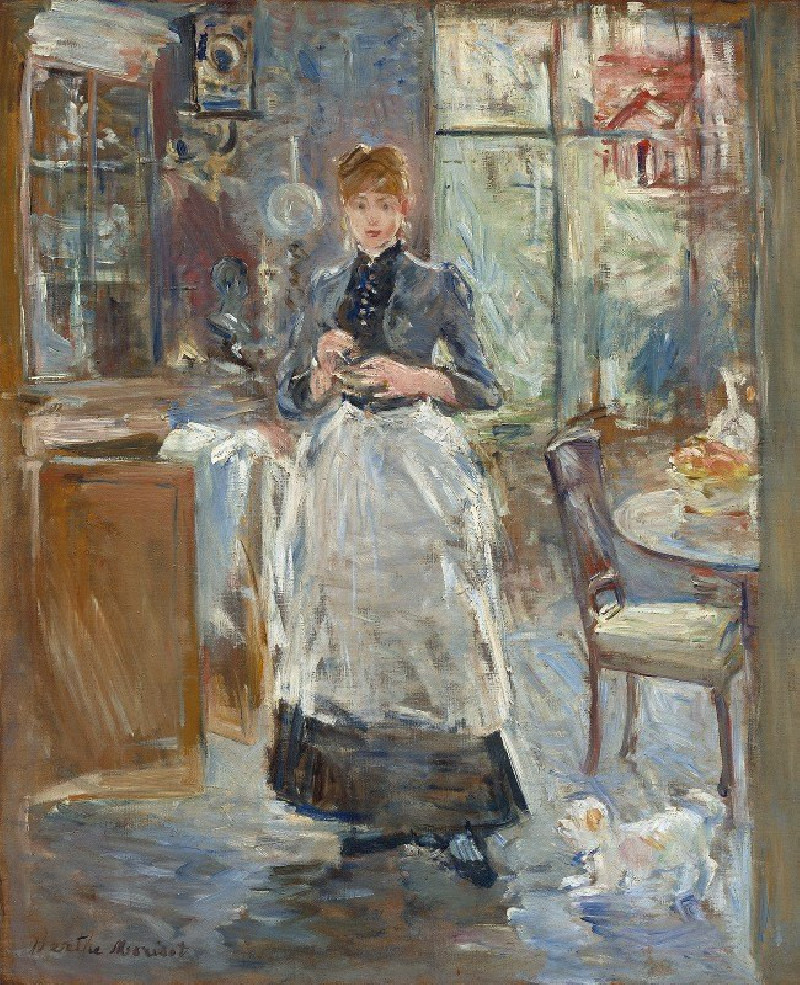Wucht (around 1923)
Technique: Giclée quality print
Recommended by our customers
More about this artwork
"Wucht" – A Captivating Oeuvre by Karl WienerIn the fascinating artwork "Wucht" crafted around 1923, artist Karl Wiener displays a striking and expressionistic representation of a human figure enveloped in an enigmatic aura. The painting is distinguished by its intense color palette and the robust use of lines that not only define but also intensify the subject's presence against a vividly colored background.The central figure, depicted with a bold, mask-like face, stands prominently, blending potent blues and deep reds to symbolize perhaps emotions or the ambiance around. The expressive strokes, particularly noticeable in the delineation of the figure, convey a dynamic and almost textured feel to the depiction."Wucht," which translates to "impact" or "force" in German, appropriately encapsulates the power and depth the painting exudes. This piece could be interpreted as an examination of the human condition or as a metaphorical representation of psychosocial forces. The austere and somewhat abstract portrayal invites viewers into a reflective introspection, encouraging them to explore the resonating force of the artwork.
































